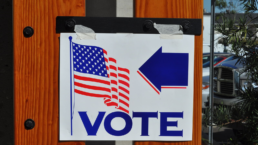Stopping the party’s rightward drift means having a real primary.
By Hamilton Nolan, How Things Work
The scariest possible outcome of the 2024 presidential contest is a Trump victory. The second scariest outcome, however, is a scenario in which center-right, anti-Trump voters pour into the Democratic Party and elect Kamala Harris and then proceed to pull the Democratic Party to the right. This scenario is extremely plausible. Back to the Clinton era we go!
Forgive me for indulging in a little bit of forward thinking here. Set aside, for a moment, the urge to cry “We just need to win this election!” and allow yourself to imagine the next four years of American politics. Whenever anything that might be construed as a “prediction” comes up, I have to note: We can’t predict specific events, we can’t predict crises, we can’t predict the exact shape of what the next four years will bring. What we can do is to look at what is happening right now within our political parties and extrapolate forward the common sense risks. So let me tell you the common sense risk that is freaking me out.

As the endorsements of Harris by Dick Cheney and a long list of his fellow disgruntled establishment Republicans show, Trump has fully alienated a significant part of the Republican coalition. Specifically, he has alienated the most conservative establishment slice of the party, in the true sense: The business leaders, the military leaders, the longtime party stalwarts, the people whom the Republican Party has long existed to serve. These people see themselves as entitled to run the party. They have always been happy to cater to and accept the votes of the outright racists and loons, but that faction was never supposed to be in charge. Now, with Trump, that faction is in charge, and a fair portion of the traditional Republican establishment has made the calculation that Trump represents such a specific danger of doing crazy shit—a screaming toddler armed with the keys to the global economy, and the nuclear codes—that they are better off backing Harris, just for the sake of stability. These people certainly plan on retaking their place atop the Republican Party after a Trump loss. But it remains an open question whether the Republican Party will snap back to its traditional formation after Trump leaves, or whether the MAGA faction will solidify its leadership of the party, alienating those center-right traditionalists for good.
If MAGA is the future of the Republican Party, some of those temporarily disaffected people will shrug and return to the fold, satisfied with lunacy in exchange for tax cuts. But some other portion of them will drift into what they see as their only alternative: the Democratic Party. For those of us on the left, that rearrangement would only serve to make the center of the party even more distant from us than it already is.
This is not theoretical. This process is unfolding right now. Harris is not just accepting the support of these Republicans. She is leaning into it. She did not just accept Dick Cheney’s vote; she did a rally with Liz Cheney and thanked Dick Cheney for “what he has done to serve our country.” She has earned the support of tech investor Ben Horowitz, until recently a Trump backer, who said that he was “encouraged” by conversations with the Harris campaign about its tech policy. She is cultivating the support of Wall Street financiers—the FT reports that “Two finance executives close to Harris said they had been reassured by her that she could appoint new officials to the Securities and Exchange Commission and the Federal Trade Commission who would take a less aggressive stance than current chairs Gary Gensler and Lina Khan,” which would be a catastrophic loss. And her economic plan, though still vague, is notably less oriented towards the perspective of strengthening labor, and more oriented towards consumer-centric policies that do not attack the dangers of concentrated economic power at its roots.
Recent Posts
“We’re Going to Run the Country:” Preparing an Illegal Occupation in Venezuela
January 4, 2026
Take Action Now Under international law, nothing described in that press conference is legal. The UN Charter prohibits the threat or use of force…
‘The Actions of a Rogue State’: US Lawmakers Demand Emergency Vote to Stop Trump War on Venezuela
January 3, 2026
Take Action Now “Trump has no right to take us to war with Venezuela. This is reckless and illegal,” said Rep. Greg Casar. “Congress should vote…
“The Blue Road To Trump Hell”: Norm Solomon On “How Corporate Democrats Paved The Way For Autocracy”
December 31, 2025
Take Action Now “If you don’t examine real history, then you’re in a cycle that repeats the same problems,” says Norman Solomon, director of…
Why is the Democratic party hiding its 2024 autopsy report?
December 30, 2025
Take Action Now If the DNC isn’t open and transparent about why they lost, then how can we be sure they will learn their lesson this time?By…




